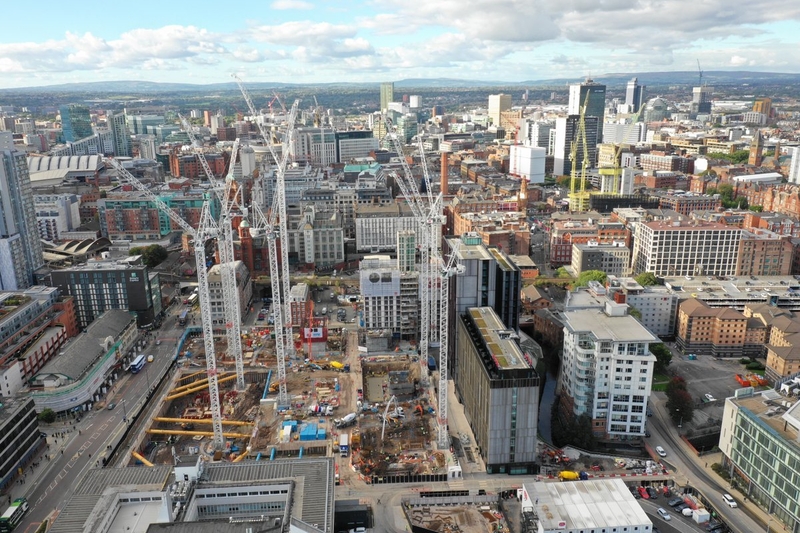Jonathan Schofield on the building boom and how things have changed
TIME was, two decades or so ago, when you could have fitted the whole city centre population into Manchester Central with room to spare. A good politician could have shaken hands with most of them. In other words, the population was less than five thousand. Take it thirty years back and there were just a couple of hundred people living in the city centre. They could have all gone to a big pub for a pint together.
A new report, by Deloitte Real Estate, shows how things have changed. Deloitte looked at central Manchester and Salford around Trinity Way and Chapel Street, as well as the university districts of both cities. Apparently, by the end of 2021, there will be more than 100,000 people living in that area. This is a spectacular rise.
If the city is serious about a balanced central population then where are the schools and the playgrounds?
And it will be needed. Deloitte found that there were 14,480 residential units under construction in 2018, while in 2016 there were only 6,963. Meanwhile ‘the anticipated level of residential delivery over the next three years is due to exceed the previous ten years combined’.
That all sounds very positive. Cities are about people and more people living in the city centre must surely increase the amenity and security for everyone using the city centre. Of course, this ‘population growth will require services to support it’. This is where concern starts to bite. There are new education and health facilities planned at Great Jackson Street and a fine new 6.5 acre park at Mayfield, but precious little else planned.
The report also found that 58% of the new residences, which by the way are nearly all apartments, will be two bedroom, meaning the target audience will tend to be transient, here for a few years and then off. There is little sign the developers see people creating permanent roots and planning to bring up families in the central areas.
Indeed, Deloitte noted that the last time anybody looked in 2016, there were only 100 children in the whole of the Deansgate and Piccadilly wards. If the city is serious about a balanced central population then where are the schools and the playgrounds?
The rush to invest in residential is top heavy in the scheme of things. 48% of all construction is residential and just 13% office. There’s also 9% hotel construction and just 3% educational and research, while there’s also 3% student residential. The decline of town centre shopping is underlined by the news that just 1% of construction is for retail and leisure.
The central areas of Manchester and Salford are clearly changing in character, and while the residential growth is welcome (if not its restricted range) then there must be the jobs to support it. Manchester’s office growth is fairly healthy but the imbalance with residential is informative, especially with business confidence low as ‘the pace of Brexit negotiations weighing heavily on business sentiment’.

Another interesting point concerns wages. The average salary is £28,558. Manchester City Council’s Affordability Framework reckons with 30% of gross income spent on rent then people can pay £713.50 per month. This means they won’t be able to rent most properties on their own so the assumption in this survey is that most two bedroom apartments will have the rent shared between couples or young professionals.
Still, individuals aside, it must be assumed that given the heady growth of central Manchester and Salford, the respective city councils might expect a windfall in business rates and council tax. Surely this can then be diverted into both of them paying attention to providing more educational opportunities for residents with families.
At the same time, surely some money can be directed at sorting out the details, the little things that really add up to making a city centre of a truly international standard. Can’t money be found with this upsurge in income to make sure the pavements are up to scratch, that litter is picked, that the tiny central public gardens such as Sackville or Parsonage have proper care, that the embarrassing astro-turf is lifted from Cathedral Gardens, that signage and way-finding is improved.
A question we'll be asking in a subsequent article is how much revenue councils are actually receiving from these billions of pounds of investment? Are some developers getting away without making their due contribution?
The Deloitte Real Estate survey is entitled the 'Manchester Crane Survey' and is a fascinating read. The title is facile though. The fact there are 70 cranes rearing up in the central areas tells us nothing of the city beneath them. Development for its own sake provides welcome energy, but in the complex life form that is the city, it surely needs to lead somewhere, it needs to have the aspiration to make the city a better place to live, work and play.















